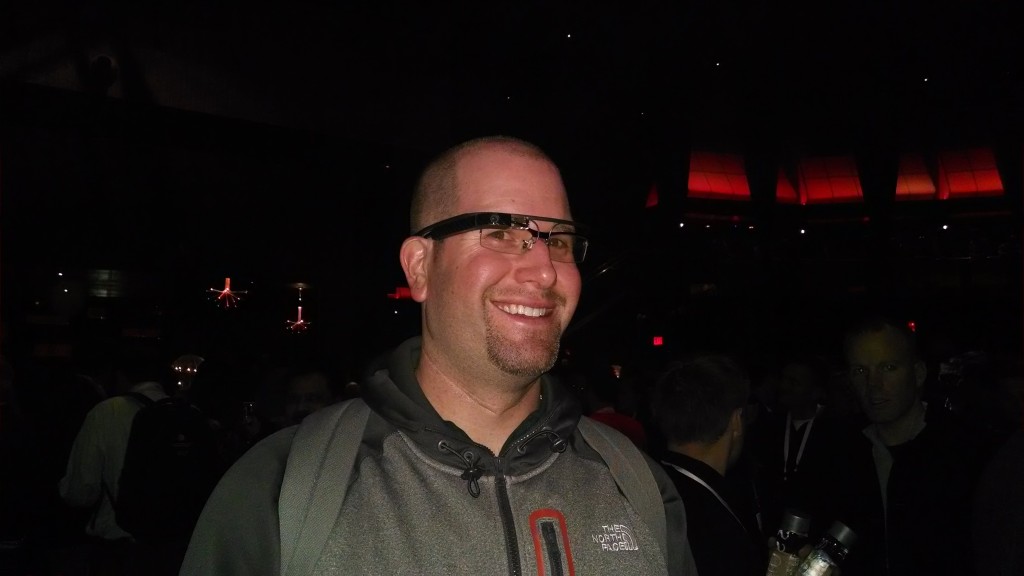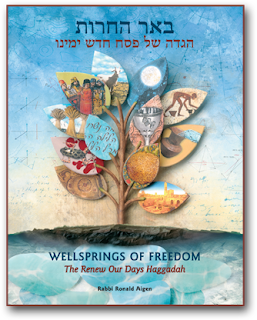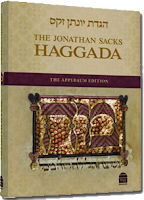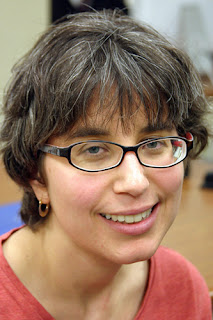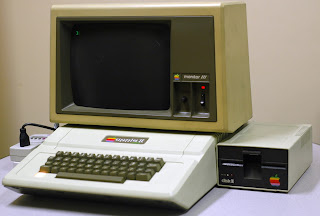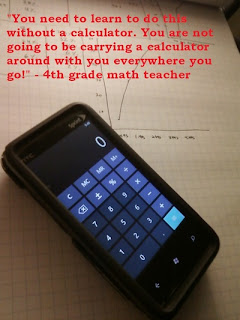A version of this appeared on the JTA.org website
Bill Gates paid a visit to Steve Jobs toward to the end of the Apple visionary’s life. The two technology giants talked about the future of education. According to Walter Isaacson’s biography of Jobs, both men agreed that computers had made surprisingly little impact on schools. Gates said, “Computers and mobile devices would have to focus on delivering more personalized lessons and providing motivational feedback.” One of the many projects Jobs had hoped to develop before his life was cut short, Isaacson explained, was “to disrupt the textbook industry and save the spines of spavined students by creating electronic texts and curriculum material for the iPad.”
 |
High School students using their iPads at
the Frankel Jewish Academy in Metro Detroit |
Rabbi Joshua Spodek regularly studies the Talmud at home with his son, but when he began using an iPad and the iTalmud app, he noticed how his son responded to the “fusion of modern technology with ancient text.” Spodek, who works at the Scheck Hillel Community Day School in North Miami Beach, thought of a way to bring that technology to the classroom. The school is now offering an entirely paperless Talmud course.
“The increased levels of engagement, portability, and space and cost saving have been enormous,” said Seth Dimbert, the school’s director of learning technologies. “Normally, when you study the Talmud, each page is covered with cross-references and tertiary commentaries, and you have bookshelves filled with dozens or even hundreds of secondary reference texts. Using an iPad application puts all of that reference material in hypertext. It’s an ideal way to study the Talmud, which is in some sense the original hypertext.”
At the Frankel Jewish Academy (FJA) in suburban Detroit, students began this school year with a nice surprise. Each student in the high school received a new 16GB WiFi iPad2. The school-wide distribution of the iPad to each student is the result of both a generous gift from an angel donor and the advantageous timing in the school’s computer lease agreement with Apple. Patti Shayne, the school’s director of technology, believes the iPad project is in line with FJA’s reputation as a cutting-edge institution, especially in the area of technology.
“The move to this incredible new technology gives teachers access to so many more sources and enables students to leverage their learning. With the iPad, students have one central place for assignments, communications and in many cases, text books and reading material. They will be able to access sources not available before,” explained Shayne. “Our job is to make that learning as inspiring and exciting as possible and prepare FJA students for a future where competency with all web-based devices is the norm.”
 |
Kindergarten students at the Bohrer-Kaufman Hebrew Academy
of Morris County, New Jersey (Photo by Johanna Ginsberg) |
The students aren’t the only ones in the school who have embraced the iPads. The teachers had a chance to play with them before the students even returned from summer break. One teacher at FJA was already an iPad pro. Robert Walker, a government teacher, has had an iPad since 2009 when they were released to the public. “Where I see the iPad really impacting learning is that it appeals to so many different learning styles. Students will have more freedom in choosing the direction they want to go to master their coursework,” Walker said. “While meeting the requirements, students will also have the ability to go above and beyond what they are required to do. It’s a powerful tool that will support learning in any number of ways.”
One way the iPad will help students learn is by giving them the opportunity to review a lecture they might not have fully understood the first time. FJA’s chemistry teacher videotaped himself going through a problem and then uploaded the informational video onto the students’ iPads. “Students now have the opportunity to watch his demonstration several times,” explained Shayne. “Sometimes you don’t catch it all and some students are hesitant to speak up. With the iPad they can listen to the explanation as many times as they need at home or at school.”
That same chemistry teacher uses a free app called Mahjong Chem, which his students use to practice matching elemental names to symbols, naming polyatomic ions, assigning oxidation numbers, earning electronic configurations and understanding metric prefixes. Other apps that are being used include Pages (for word processing), Keynote (for presentations) and Numbers (an app similar to Microsoft Excel). Students are allowed to purchase their own apps, as long as the apps meet the standards of the school’s Acceptable Use Policy. Teachers may even require students to purchase apps; a requirement explained to parents in a document from Shayne as the equivalent to asking students to purchase a calculator, notebook or other necessary school supplies.
Are the students using the iPads for serious academic work or are they just expensive video game consoles with a pretty screen? According to 12th grader Shira Wolf of West Bloomfield, it’s a mix. “In Jewish Leadership, our teacher, Mr. [Marc] Silberstein, is trying to be completely paperless so we went over the syllabus on our iPads and got to play around with the neuAnnotate app to annotate it.” She also noted that it’s common to see her peers playing the popular game “Words with Friends” on their iPads during study hall or even in class, which is frowned upon.
Other Jewish day schools across the country are incorporating iPads into the schools as well. While it’s mostly middle schools and high schools, there are also some elementary schools that have made iPads part of the learning process. At the Modern Orthodox Ohr Chadash Academy in Baltimore, all fourth-through-sixth graders have an iPad. As Julie Wiener, educational writer at The Jewish Week points out, the iPads “bring challenges as well: they are fragile, expensive, awkward to type on and chock full of distractions, especially when connected to the Internet. And it is unclear whether — once its novelty wears off and if it becomes as commonplace as pencils and notebooks — the toy-like iPad will retain its magical power over children.”
Some educators are quick to point out that if teachers use the new technology to teach the same way they always have then the technology is not being used correctly. “To let students simply listen to lectures on their own time – that doesn’t require an iPad. It requires a tape player. Or to study Talmud in the same way, just with a different visual – again, we’re not revolutionizing education,” argues Dr. Erica Rothblum, the Head of School at Beth Hillel Day School in Valley Village, California. “At our school, we have a 1:1 iPad program for all students in grades 4-6, but we are very aware that this is a tool. There are times that a pen and paper are better tools, and students will use those. The iPad does allow us, however, to encourage discovery, play and research.
At Rothblum’s school, the students are creating a “visual tefillah” by finding visuals that represent their prayers and using keynote, including animation, to illustrate what the prayer means. Students there are also creating “voicethreads” in Hebrew in which they record themselves telling a story or a conversation in Hebrew and then parents, teachers and their peers can listen to the recording and leave comments.
So, what’s next? Mobile device learning is certainly the wave of the future and school administrators are predicting innovations that never would have been believed a decade ago. When cell phone technology became inexpensive enough for high school and middle school students to be able to bring their phones to school, policies were quickly implemented to first ban the communication devices and then eventually place restrictions on their use.
One thing that has changed with this younger generation is the innate comfort level they have with technology. After all, this is the generation that has grown up with iPods, digital cameras and smartphones. Shaindle Braunstein-Cohen, former director of the Hermelin ORT Resource Center, underscored this when she said, “We used to teach technology as a subject. We would teach how to use a device. It’s no longer the ‘something’ that we teach; it’s the platform on which we deliver information.”
When asked how long Shayne expects FJA will keep the current crop of iPads until they become stale or even obsolete as Apple continues to release more powerful versions each year, she responded, “We are looking at a three-year refresh rate. As to what the future holds, maybe one of our students will invent it.”
(c) Rabbi Jason Miller | http://blog.rabbijason.com | Twitter: @RabbiJason | facebook.com/rabbijasonmiller
